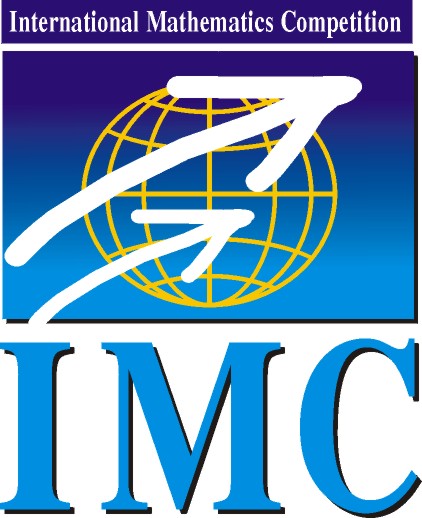
|
International Mathematics Competition
|
IMC 2026 |
| Information | Schedule | Problems & Solutions | Results | Contact |
IMC2025: Day 2, Problem 8
Problem 8. For an \(\displaystyle n\times n\) real matrix \(\displaystyle A\in M_n(\RR)\), denote by \(\displaystyle A^{\mathsf{R}}\) its counter-clockwise \(\displaystyle 90^\circ\) rotation. For example,
\(\displaystyle \begin{bmatrix} 1 & 2 & 3 \\ 4 & 5 & 6 \\ 7 & 8 & 9 \end{bmatrix}^{\mathsf{R}} = \begin{bmatrix} 3 & 6 & 9 \\ 2 & 5 & 8 \\ 1 & 4 & 7 \end{bmatrix}. \)
Prove that if \(\displaystyle A = A^{\mathsf{R}}\) then for any eigenvalue \(\displaystyle \lambda\) of \(\displaystyle A\), we have \(\displaystyle \operatorname{Re}\lambda = 0\) or \(\displaystyle \operatorname{Im}\lambda = 0\).
Jan Kuś, University of Warwick
Solution. If \(\displaystyle \lambda=0\), the claim holds as \(\displaystyle 0 \in \RR\). Assume \(\displaystyle \lambda \neq 0\) is an eigenvalue of \(\displaystyle A\) with a corresponding eigenvector \(\displaystyle x \in \CC^n \setminus \{0\}\).
We will first express the operation \(\displaystyle A \mapsto A^{\mathsf{R}}\) algebraically. The element at position \(\displaystyle (i, j)\) in \(\displaystyle A\) ends up at position \(\displaystyle (n+1-j, i)\) in \(\displaystyle A^{\mathsf{R}}\). Thus, the rotation is defined by the relation \(\displaystyle (A^{\mathsf{R}})_{i,j} = A_{j, n+1-i}\).
Let \(\displaystyle J\) be the matrix where \(\displaystyle J_{i,j} = \delta_i^{n+1-j}\). The operation of transposing \(\displaystyle A\) and then reversing the rows gives the matrix \(\displaystyle JA^\top\). The \(\displaystyle (i,j)\)-th element of this matrix is
\(\displaystyle (JA^\top)_{i,j} = \sum_{k=1}^n J_{i,k}(A^\top)_{k,j} = (A^\top)_{n+1-i, j} = A_{j, n+1-i} . \)
This matches the definition of \(\displaystyle A^{\mathsf{R}}\), so we get the identity \(\displaystyle A^{\mathsf{R}} = JA^\top\). Note that the matrix \(\displaystyle J\) is symmetric (\(\displaystyle J=J^\top\)) and it is its own inverse (\(\displaystyle J^2 = I\)).
The given condition \(\displaystyle A = A^{\mathsf{R}}\) thus means \(\displaystyle A = JA^\top\). Left-multiplying by \(\displaystyle J\) yields
\(\displaystyle JA = J(JA^\top) = (J^2)A^\top = A^\top . \tag{}*\)
Now, consider the standard Hermitian inner product \(\displaystyle (u,v) = v^* u\) on \(\displaystyle \CC^n\). We evaluate \(\displaystyle (Ax, Ax)\) in two ways. First, using our choice of \(\displaystyle x\) as an eigenvector corresponding to \(\displaystyle \lambda\):
\(\displaystyle (Ax, Ax) = (\lambda x, \lambda x) = |\lambda|^2 \|x\|^2. \)
Second, using the adjoint property and \(\displaystyle (*)\):
\(\displaystyle (A x, A x) = (A^* A x, x) = (A^\top A x, x) = (J A (\lambda x), x) = \lambda(J A x, x) = \lambda^2(J x, x). \)
Together, these give us \(\displaystyle |\lambda|^2 \|x\|^2 = \lambda^2 (Jx, x)\).
The term \(\displaystyle (Jx, x)\) is real, since \(\displaystyle (Jx, x)^* = (J^* x, x) = (Jx, x)\) because \(\displaystyle J\) is real and symmetric. Since \(\displaystyle \lambda \neq 0\) and \(\displaystyle x \neq 0\), the left side \(\displaystyle |\lambda|^2 \|x\|^2\) is a positive real number. This implies that \(\displaystyle \lambda^2 (x, Jx)\) must also be a positive real number. And as \(\displaystyle (x, Jx)\) is real, so is \(\displaystyle \lambda^2\).
Thus, either \(\displaystyle \lambda\) is real (if \(\displaystyle \lambda^2>0\)) or its real part is \(\displaystyle 0\) (if \(\displaystyle \lambda^2<0\)). This completes the proof.
© IMC